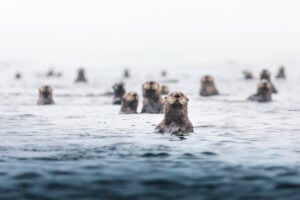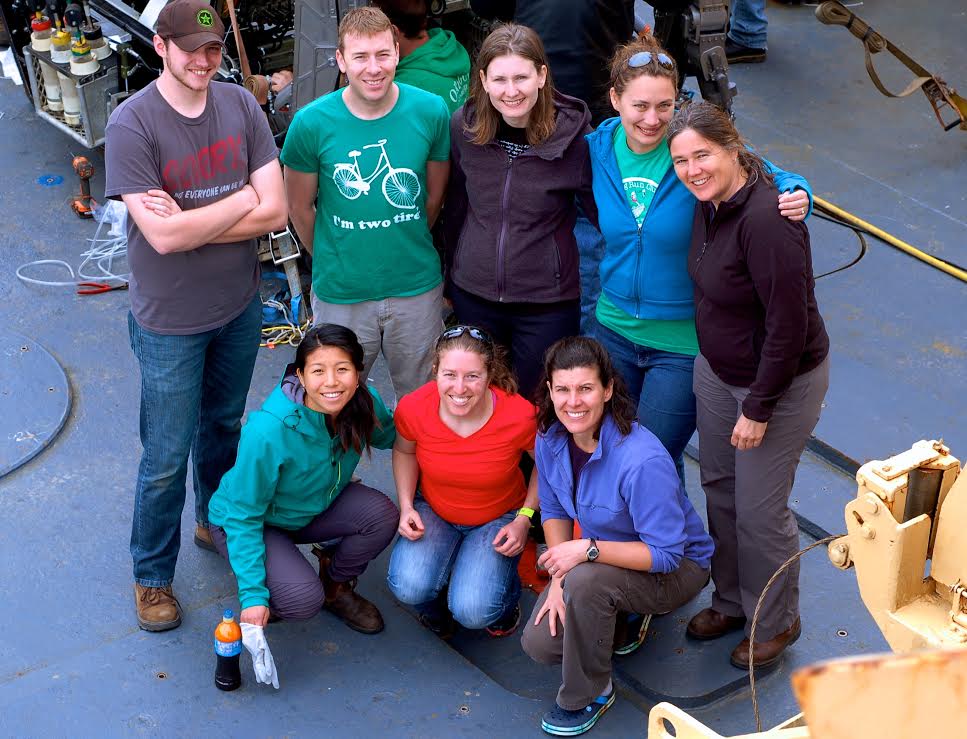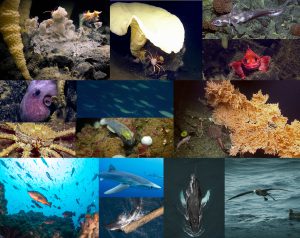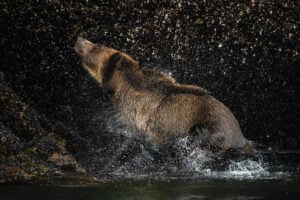
Wildlife
The otter, the urchin and the Haida
As the sea otter begins its long-overdue return to Haida Gwaii, careful plans are being laid to welcome them — and to preserve a prosperous shellfish harvest
- 3015 words
- 13 minutes
This article is over 5 years old and may contain outdated information.
Environment

Sea glass sponge reefs are like underwater old growth forests.
So says Sally Leys, a professor of biological sciences at the University of Alberta, when asked to describe the towering reefs she’s about to explore within British Columbia’s Hecate Strait. The comparison is apt. Much like an old growth forest, the reef is ancient, enigmatic and an area of concern for conservation groups.
As part of a research cruise equipped with a remotely operated submersible, Leys and her team of scientists have begun to explore the reefs, which was just last year announced to be a Marine Protected Area. They are also publicly livestreaming the video feed.
The reef that Leys and her team is investigating is one of the few locations world-wide that glass sponges can be found in such shallow waters.
“It’s like you are looking at an eerie forest of golden chimneys. Thousands and thousands of them. It’s beautiful,” says Leys.

With no head, eyes, or organs, the sea glass sponge is an unusual animal—and they are animals, their species falling under the Porifera phylum. Their skeletons are made up of silica, a component of glass, and their bodies filter the seawater for particles and microscopic organisms.
They are also an important habitat for various marine creatures in the area. Or, as Ley describes it, an underwater city.
“They’re super markets, apartments – an oasis in what is mud. By forming these structures, they provide homes for the fish live there,” says Leys.
The research Leys is conducting will help to understand the sponges better and figure out ways to continue to protect the reefs from human activities.
The data will be collected, and images livestreamed, using a remotely operated and submersible vehicle called a ROPOS. One of the data collections the group plans to do is map the sponges according to their sounds, using hydrophones to listen to what the reef has to say for itself.

Beyond the trip’s research objectives, Leys hopes the project will also offer the public a glimpse into the mysterious underwater city of sponge.
“I had the same sort of feeling you’d have if you bus through a world of jellyfish. It’s like a home screen on a computer, a kaleidoscope of colour, a mystery world – like going through the wardrobe. It’s something that we should not be closeting in the research world. It’s something the world needs to see. This is Canada’s. It’s like having Everest in your backyard and we’re trying to bring it to them [Canadians].”
Members of the public can access the livestream now via Ley’s website. The researchers will also be answering viewer’s questions through text and, periodically, live while they work.

Are you passionate about Canadian geography?
You can support Canadian Geographic in 3 ways:

Wildlife
As the sea otter begins its long-overdue return to Haida Gwaii, careful plans are being laid to welcome them — and to preserve a prosperous shellfish harvest

Environment
Two marine biologists offer a glimpse of life at the bottom of the ocean during 2018, 2019 and 2020 seamount expeditions

Environment
David Boyd, a Canadian environmental lawyer and UN Special Rapporteur on Human Rights and the Environment, reveals how recognizing the human right to a healthy environment can spur positive action for the planet

Wildlife
Salmon runs are failing and grizzlies seem to be on the move in the islands between mainland B.C. and northern Vancouver Island. What’s going on in the Broughton Archipelago?